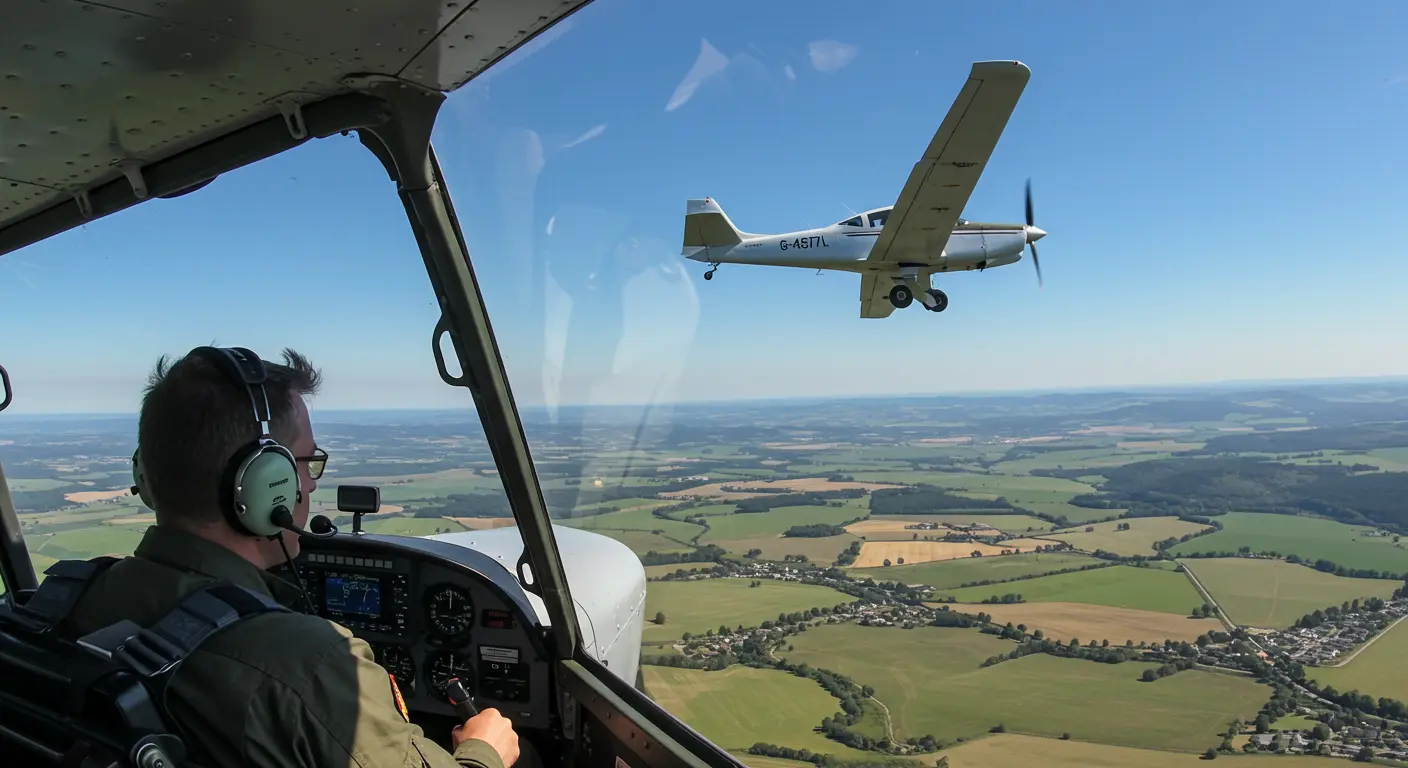What is a Graveyard Spin?
A graveyard spin represents one of aviation’s most insidious aerodynamic phenomena—a dangerous stall variant characterized by a critical perceptual illusion. What makes this so dangerous? The pilot’s gradual loss of awareness that distinguishes it from conventional spins.
The phenomenon’s defining trait lies in how the pilot’s awareness of rotation gradually fades as the spin persists. Picture this: as the aircraft spins, fluid within the pilot’s inner ear—part of the vestibular system—slowly adapts to the rotation, creating a false sensation of normal flight.
The graveyard spin should not be confused with the graveyard spiral, a different emergency where the aircraft is not stalled but enters a high-speed descending turn, also driven by spatial disorientation.
The Role of Spatial Disorientation
Spatial disorientation lies at the heart of the graveyard spin phenomenon, and poses one of aviation’s greatest psychological challenges. This condition strikes when a pilot’s ability to accurately perceive their orientation relative to Earth’s surface becomes fatally compromised.
The human body relies on three sensory systems to maintain spatial orientation:
-
Visual System: The dominant source of orientation in good visibility.
-
Vestibular System (inner ear): Detects angular acceleration and gravity.
-
Proprioceptive System (skin, muscles, joints): Senses pressure and body position.
These sensory illusions emerge because our vestibular system evolved for terrestrial movement, not three-dimensional flight. The semicircular canals detect angular acceleration but become “saturated” during prolonged turns, creating false sensations of level flight while the aircraft continues turning.
Pilots must learn to trust their instruments over bodily sensations—a fundamental skill requiring constant practice, making continuous instrument training is essential for those flying in low-visibility conditions.
Differences Between Graveyard Spin and Spin
Though related, regular spins, graveyard spins, and graveyard spirals possess distinct characteristics. Understanding these differences is essential for proper recognition and recovery.
| Feature | Regular Spin | Graveyard Spin | Graveyard Spiral |
|—|—|—|—|
| Aerodynamic State | Stalled (asymmetric lift) | Stalled (asymmetric lift) | Not Stalled (wings flying) |
| Airspeed | Low and relatively constant | Low and relatively constant | High and rapidly increasing |
| Pilot Perception | Rotation is accurately sensed | Sensation of rotation is lost | Sensation of turning is lost |
| Primary Hazard | Loss of control from stall | Re-entering the spin due to illusion | High-speed impact or structural failure |
Recovery Procedures for Graveyard Spin
Recovering from a graveyard spin requires following the P.A.R.E. sequence—a methodical approach that counters both aerodynamic stall and perceptual illusion:
-
Pover: Reduce to idle to minimize the spin’s energy.
-
Aailerons: Position to neutral to avoid aggravating the stall.
-
Rudder: Apply full rudder opposite to the spin’s direction to stop rotation.
-
Elevator: Move forward to break the stall by reducing the angle of attack.
Once rotation ceases and the stall breaks, neutralize the rudder and gently recover from the resulting dive. Exercise caution here—avoid exceeding the aircraft’s maximum permitted airspeed (VNE) or maximum G loading, which could trigger structural failure.
The primary recovery challenge? Overcoming powerful vestibular illusions that convince pilots they’re spinning in the opposite direction during recovery. This feeling is so strong that pilots often reapply controls that would re-enter the original spin.
Recovery techniques vary by aircraft, so pilots must always follow the procedures in their specific aircraft’s operating handbook and practice them regularly with a qualified instructor.
Preventative Measures and Training
Prevention depends on comprehensive training and consistent pilot discipline across several critical areas:
-
Instrument Training: Pilots must learn to trust their instruments over bodily sensations. This training should include unusual attitude recoveries to build discipline against spatial disorientation.
-
Situational Awareness: Continuously cross-checking instruments and recognizing early warning signs of disorientation are vital.
-
Adherence to Flight Rules: Non-instrument-rated pilots must strictly avoid flying into conditions with poor visibility (like clouds or at night) where visual references are lost.
-
Simulator Training: Modern simulators allow pilots to safely experience and practice recovering from disorientation scenarios.
-
Personal Limitations: Pilots must honestly assess their proficiency and never fly in conditions that exceed their capabilities.
Aircraft Design and Safety Features
Contemporary aircraft design includes several safety features that prevent spins or enhance recovery capabilities:
-
Wing Design: Features like wing washout and stall strips cause the stall to begin predictably at the wing root, keeping ailerons effective longer.
-
High-Lift Devices: Leading-edge slots and slats energize airflow over the wing at high angles of attack, delaying the stall.
-
Control Systems: Stick pushers automatically push the nose down to prevent a stall, while other systems may limit control inputs that could induce a spin.
-
Stall Warning Systems: Audible horns or stick shakers provide early warning of an impending stall, giving the pilot time to react.
-
Spin-Resistant Engineering: Aircraft intended for training or aerobatics are built with robust structures and effective control surfaces (like a large rudder) to ensure predictable spin recovery.
While these engineering solutions significantly enhance safety, they work best when paired with rigorous pilot training. Together, they create a comprehensive defense against spin-related accidents.

